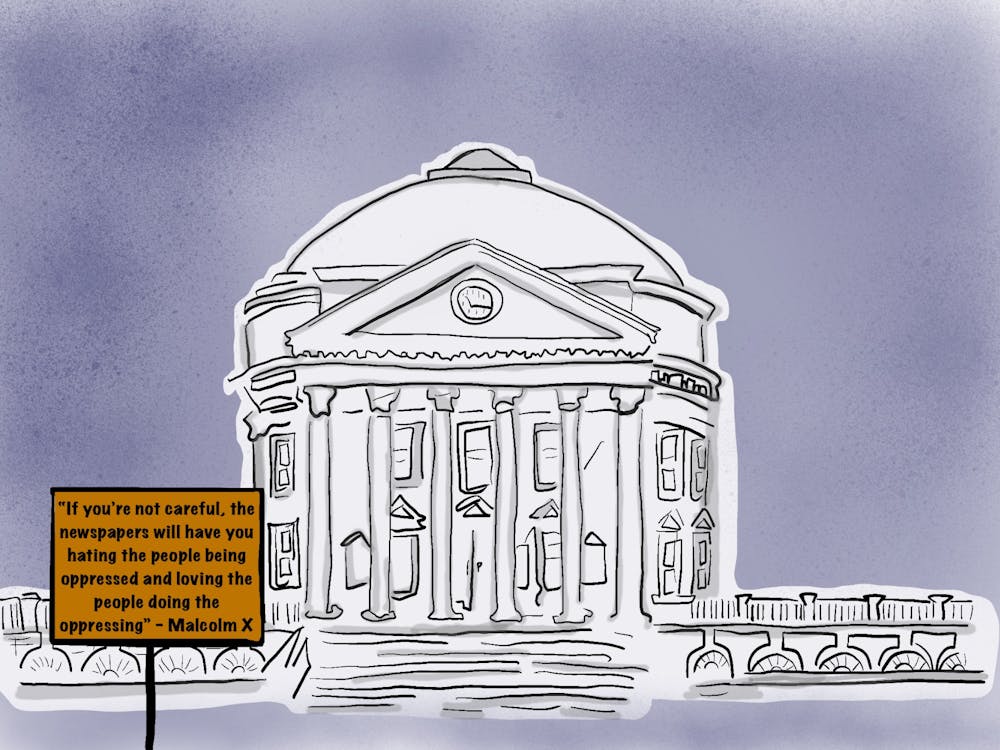In the wake of the Living Wage campaign and the Sullivan Ouster Debacle, U.Va.’s new bout of student activism takes a more measured and varied approach. Up to Us has done everything from distributing buttons and T-shirts to hosting a “Race Against the Debt” in Memorial Gym to engage students to address the mounting national debt. While learning how much the debt increased over the course of my timed mile was disconcerting for a host of reasons, fiscal and physical, the real power in this movement has been its efforts at educating the U.Va. community. Last week, Law Prof. Tom Massaro, Batten Prof. Craig Volden and Politics Prof. Herman Schwartz gave a thoroughly enlightening presentation on the issues the debt presents. As scholars of medicine, public policy and politics of development, respectively, each offered a distinct perspective on an issue that has mainly been a source of bitter disagreement and finger-pointing, but little substance and no long-term solutions.
Up to Us is a national competition across college campuses to develop an effective program for raising awareness of and connection to the fiscal issues facing Americans today. Sponsored by the Clinton Global Initiative and causes.org, teams of college students must use social networking technology, as well as boots-on-the-ground campus organizing to educate their peers on the debt. Fourth-year College students Lena Shi, Ryan Singel and Alan Safferson, the leaders of U.Va.’s Up to Us chapter, have been very busy the last few months, drawing media attention and raising awareness on Grounds. Sen. Mark Warner, D-Va., visited Grounds Feb. 11 to speak on the issue of debt and how we as students can take ownership of the solution-making process.
The summer after my first year, I had the privilege of working in the district office of my home congressman, Jared Polis from Colorado’s second district. That summer of 2011, the debt was a hot topic indeed, and I found myself in bitter arguments with my Republican friends working on the Hill. The substance of these arguments, though, reflected the ones our bosses were having: mostly accusing each other of obstruction or hostage-taking, and very little about the nature of the problem or potential solutions. Two years later, very little has changed. The fiscal cliff negotiations were about what I’d expect from a New Year’s Eve office party; everyone was a bit irrational and woke up the next morning wondering what exactly had happened. Clearly, we cannot rely on Congress to take the debt seriously, so I applaud student groups like Up to Us for taking the initiative. In the end, the only way to end unsustainable practices is to make those who pay aware of the costs, which is why an education campaign is the best way to bring about change in our fiscal policy.
A conversation about the national debt brings all sorts of speculation. People confuse economic recovery measures with debt-control measures, and throw around words like stimulus, bailout and debt ceiling without really understanding what they mean. The danger of this is that people become accustomed to hearing some pretty outrageous things. Take, for instance, a 2009 Superbowl ad featuring children reciting the Defeat the Debt Pledge: “I pledge allegiance to America’s debt, and to the Chinese government that lends us money. And to the interest, for which we pay, compoundable, with higher taxes and lower pay until the day we die.”
The camera pans across the classroom, getting close-ups on the children’s faces while the narrator admonishes us that “much of our debt is owed to foreign governments” as we look at a map of China. In truth, China only owns about 8 percent of the federal debt. The majority is held by Americans: by taxpayers in the form of inter-agency debt holding or holdings by the states and the Fed and by private companies like banks and investment firms. The danger of this kind of messaging is that it plays to xenophobia and appeals to fear by making the audience feel like victims of circumstances beyond their control. Up to Us has chosen instead to focus on awareness-raising activities like the race in Memorial Gym I mentioned above and a series of flash seminars. The group’s preference for positive messaging and empowering its audience through greater understanding makes Up to Us a groundbreaking organization with a real shot at making a difference.
The greatest strength of Up to Us is its rejection of partisanship and its message of taking responsibility for a problem that affects every single American. As students of this fine University, we will be expected, today and always, to meet the struggles of our nation head-on and provide clearheaded leadership in times of trouble. The urgency with which Washington has described the “fiscal crisis” has not been reflected in federal actions, but there will surely come a time when playing dutiful and scoring political points will no longer be acceptable. The work of Up to Us helps us prepare for that time, so when the fractious system we stand to inherit runs aground we will have the knowledge and will to fix it. The road to a sustainable future is built on education and conversation, and there’s nothing like student activists to get the job done.
Matt Menezes is a third-year College student and a master’s student in the Batten School.




